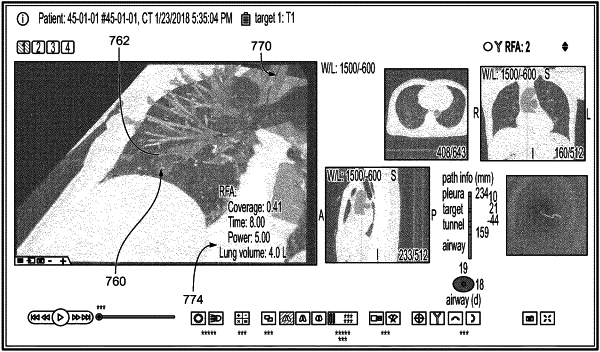| CPC A61B 34/10 (2016.02) [A61B 18/082 (2013.01); A61B 18/1492 (2013.01); A61B 2018/00541 (2013.01); A61B 2018/00577 (2013.01); A61B 2034/104 (2016.02)] | 24 Claims |

|
1. A bronchoscopic-based system for planning to ablate a target tissue in a lung of a patient with an ablation applicator comprising:
a storage for receiving image data of the lung of the patient including the target tissue to be ablated; and
a processor programmed and operable to:
compute, based on the image data of the lung, at least one candidate path for the ablation applicator to be advanced through the airway of the patient to a candidate point of entry (POE), and from the POE to the target tissue;
select a learned ablation model from a plurality of candidate models based on a set of candidate ablation parameters and at least one characteristic of the target tissue, wherein the plurality of candidate models are based on past experimental data, and wherein the past experimental data includes measurements from ablation testing on sample tissue; and
compute an ablation zone based on said learned ablation model to maximize ablation coverage of the target tissue for each said candidate path.
|